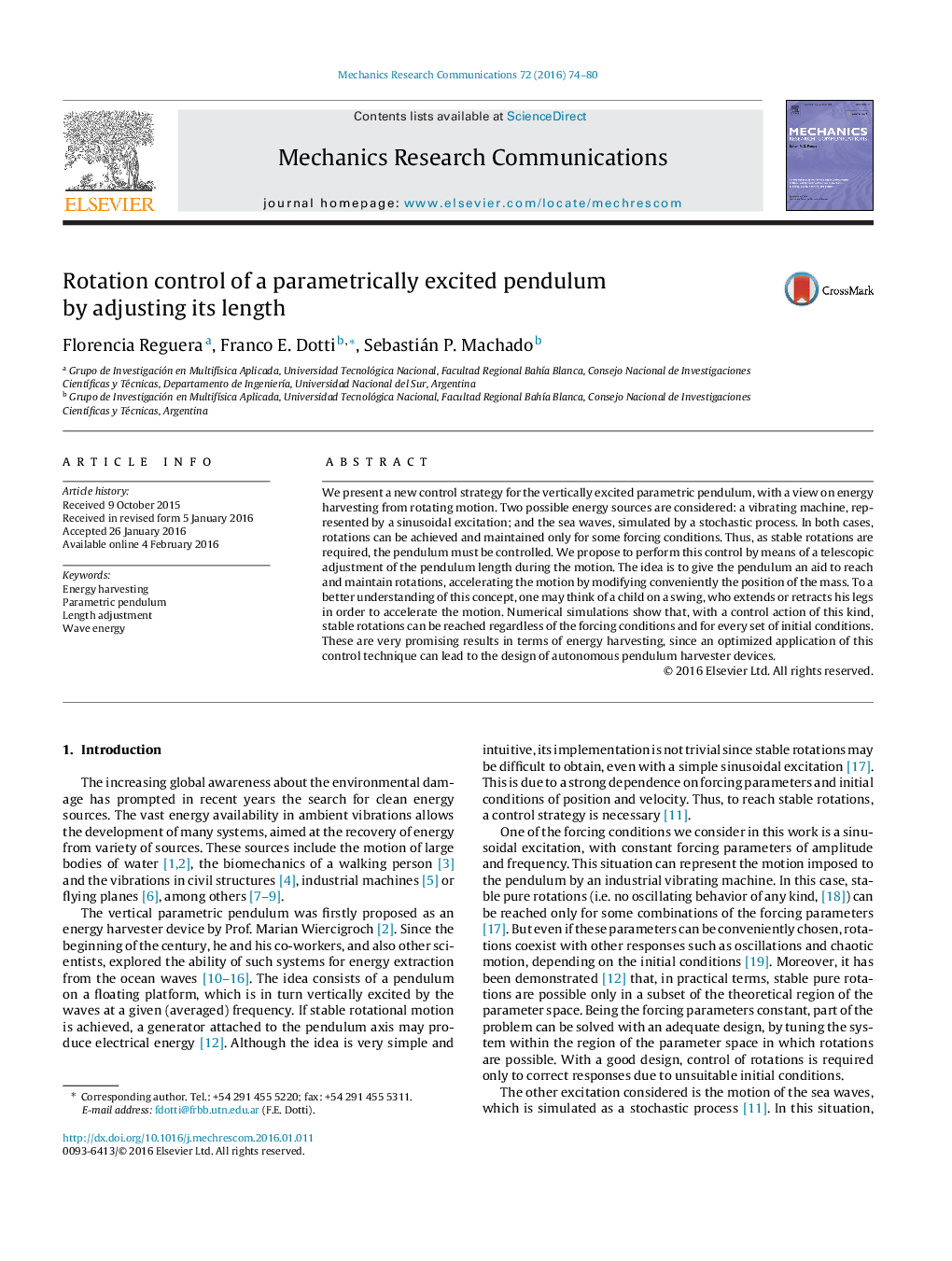| Article ID | Journal | Published Year | Pages | File Type |
|---|---|---|---|---|
| 803597 | Mechanics Research Communications | 2016 | 7 Pages |
•We present a control strategy to get stable rotations of the parametric pendulum.•The control is performed by means of a telescopic adjustment of the pendulum length.•The control function uses as input the angular position and velocity of the pendulum.•Two possible energy sources are considered: a vibrating machine and the sea waves.•The controlled pendulum reaches stable rotations regardless of the initial conditions.
We present a new control strategy for the vertically excited parametric pendulum, with a view on energy harvesting from rotating motion. Two possible energy sources are considered: a vibrating machine, represented by a sinusoidal excitation; and the sea waves, simulated by a stochastic process. In both cases, rotations can be achieved and maintained only for some forcing conditions. Thus, as stable rotations are required, the pendulum must be controlled. We propose to perform this control by means of a telescopic adjustment of the pendulum length during the motion. The idea is to give the pendulum an aid to reach and maintain rotations, accelerating the motion by modifying conveniently the position of the mass. To a better understanding of this concept, one may think of a child on a swing, who extends or retracts his legs in order to accelerate the motion. Numerical simulations show that, with a control action of this kind, stable rotations can be reached regardless of the forcing conditions and for every set of initial conditions. These are very promising results in terms of energy harvesting, since an optimized application of this control technique can lead to the design of autonomous pendulum harvester devices.
